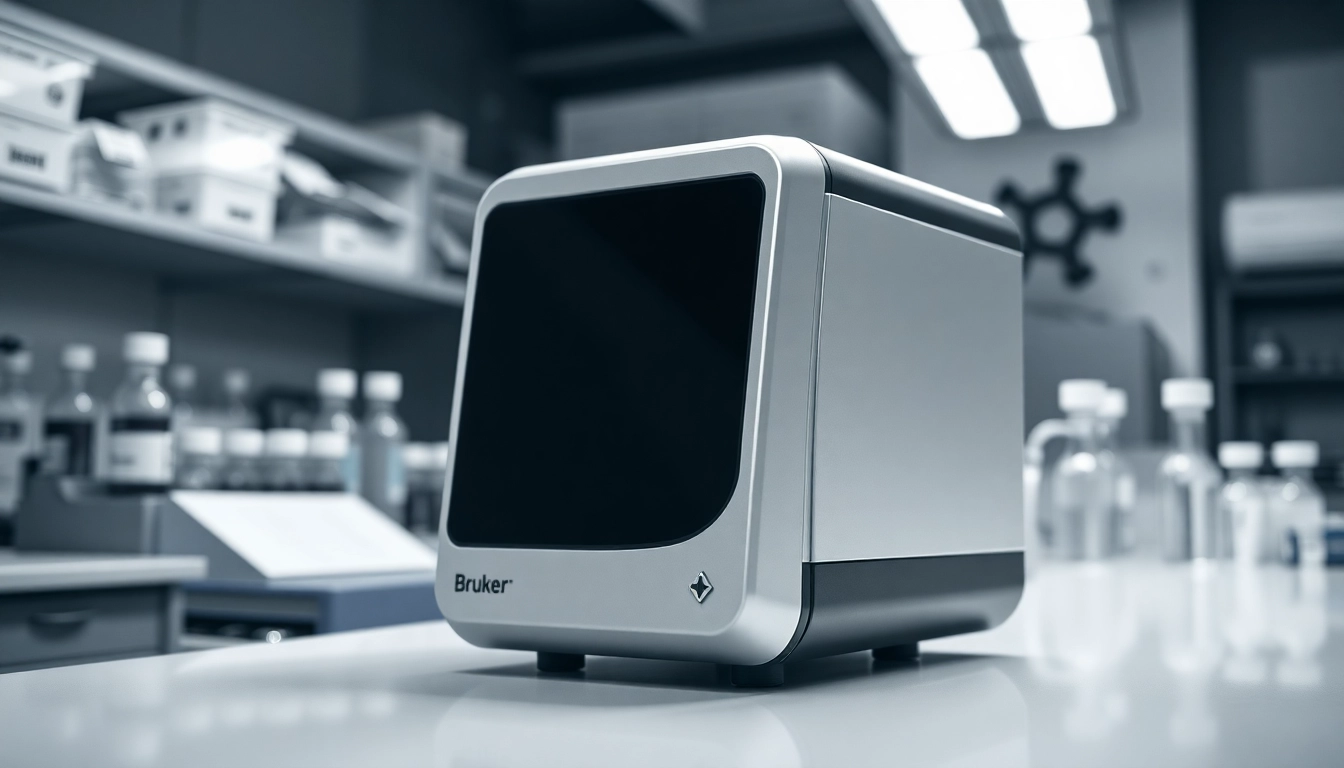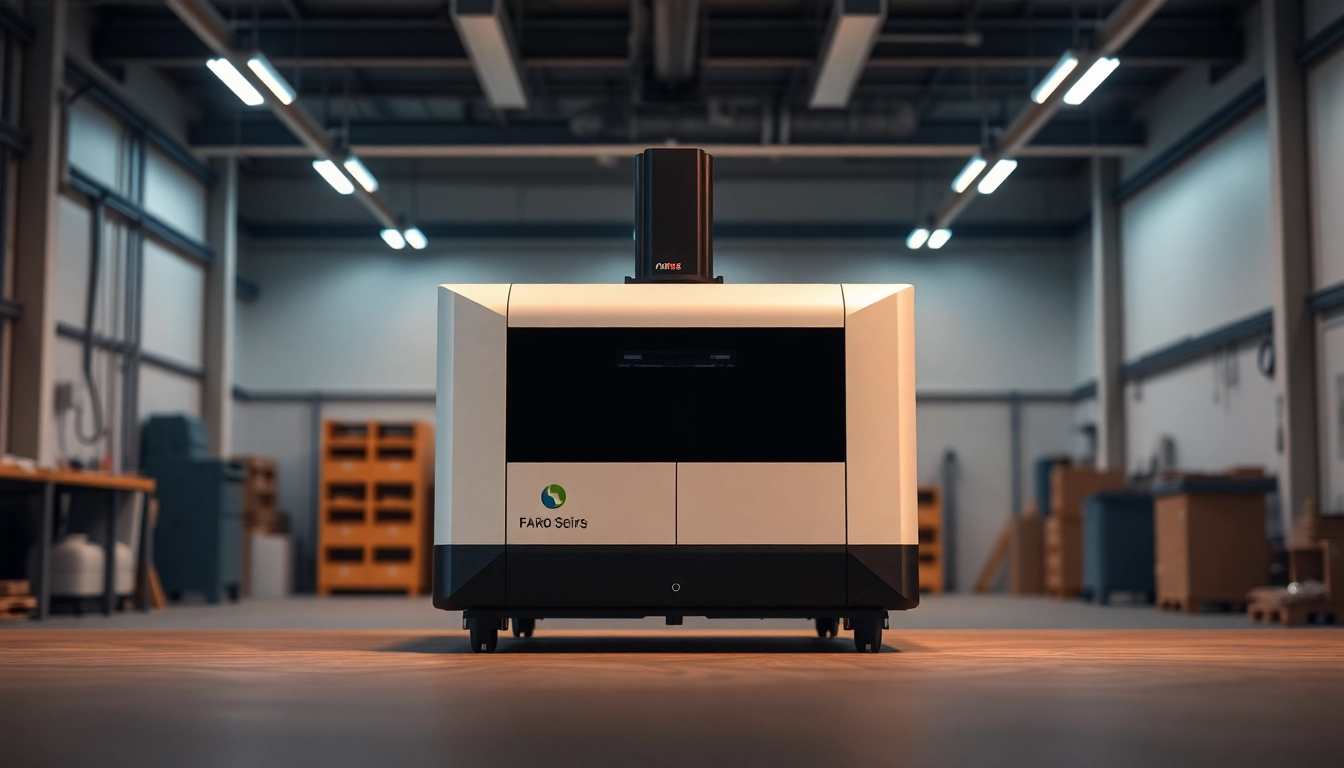Introduction to the Bruker EOS 500 Handheld LIBS Analyzer
The Bruker EOS 500 Handheld LIBS Analyzer is revolutionizing the field of material analysis with its state-of-the-art technology and portability. This sophisticated device utilizes Laser-Induced Breakdown Spectroscopy (LIBS) to deliver detailed elemental analysis in real time, making it an invaluable tool for various industries ranging from metallurgy to environmental monitoring. As industries increasingly require precise and immediate results, handheld analyzers like the EOS 500 are becoming indispensable. This article will delve into the features, applications, benefits, and future trends associated with the Bruker EOS 500 Handheld LIBS Analyzer.
What is LIBS Technology?
Laser-Induced Breakdown Spectroscopy (LIBS) is an analytical technique that employs a high-energy laser pulse to generate a plasma from the surface of a sample. As the plasma cools, it emits light that can be analyzed to identify the elemental composition of the material. This method is particularly advantageous because it requires minimal sample preparation and can analyze solids, liquids, and gases. LIBS is known for its speed and accuracy, offering results that are immediate and reliable.
The fundamental process of LIBS involves three main stages:
1. Laser Pulse Generation: A focused laser beam strikes the sample surface, creating a micro-plasma.
2. Plasma Emission: As the plasma cools, it emits photons characteristic of the elemental composition of the sample.
3. Spectral Analysis: The emitted light is collected and analyzed using a spectrometer, generating a spectral fingerprint of the material.
The ability to analyze multiple elements simultaneously makes LIBS a powerful technique suitable for a wide range of applications.
Key Features of the Bruker EOS 500
The Bruker EOS 500 is specifically designed to maximize convenience and efficiency. Some of its standout features include:
– Portability: Weighing just a few kilograms, the EOS 500 is lightweight and compact, making it easily transferable for on-site analysis.
– User-Friendly Interface: The device is equipped with an intuitive touchscreen interface that simplifies operation, requiring minimal training for users.
– Real-Time Analysis: The EOS 500 offers instant readings, allowing for immediate decision-making in critical situations.
– Wide Elemental Range: This analyzer can detect a vast array of elements from lithium to uranium, catering to diverse material analysis needs.
– Durability: Built for harsh environments, the EOS 500 is robust and can endure rigorous field conditions without compromising accuracy.
Together, these features position the Bruker EOS 500 as a leader in handheld LIBS technology, empowering professionals with the tools they need for effective and efficient material analysis.
Applications in Various Industries
The versatility of the Bruker EOS 500 enables its application across numerous industries, including:
– Metallurgy: In metallurgy, precise elemental analysis is crucial for ensuring material quality and compliance with industry standards. The EOS 500 facilitates rapid composition testing of metals and alloys.
– Mining: Mine operators can utilize handheld LIBS analyzers to assess ore grade on-site, improving resource management and operational efficiency.
– Environmental Monitoring: For environmental applications, the device allows for the rapid detection of pollutants in soil and water, contributing to more effective environmental assessments.
– Recycling: In the recycling industry, quick analysis of materials helps in sorting and ensuring that recyclable materials meet specifications.
– Pharmaceuticals: Quality control in pharmaceuticals is paramount, and the EOS 500 can assist in verifying elemental impurities in raw materials.
Each of these applications underscores the broad capabilities of the Bruker EOS 500, making it a vital instrument in material science.
Understanding the Benefits of Using a Handheld LIBS Analyzer
The adoption of handheld LIBS analyzers, particularly the Bruker EOS 500, presents numerous advantages that enhance operational efficiency and effectiveness.
Portability and Field Usability
One of the most significant benefits of the EOS 500 is its portability. Traditional laboratory-based spectroscopic methods often require samples to be sent off for analysis, which can be time-consuming and inefficient. The handheld design of the EOS 500 enables on-site material assessment, significantly reducing turnaround time. This portability is especially vital in remote locations or in industries where timely decisions are crucial.
A well-designed carrying case allows field technicians to transport the analyzer safely, and the battery-operated functionality ensures that the device can be used without a power source. This flexibility empowers professionals to conduct immediate assessments without the constraints associated with fixed laboratory setups.
Cost-Effectiveness for Material Analysis
Investing in a handheld LIBS analyzer like the Bruker EOS 500 can lead to substantial cost savings over time. Traditional material analysis often involves multiple expensive tests conducted in a laboratory, which can add to overhead costs and delay project timelines. With the EOS 500, companies can reduce the need for external testing facilities, allowing them to perform analyses in-house.
Additionally, the speed of LIBS testing means that more batches can be analyzed within a day, enabling more effective quality control and material tracking processes. This efficient operation contributes to cost savings in labor and materials, ultimately boosting profitability.
Speed and Accuracy in Field Testing
In today’s fast-paced industrial environments, speed is a necessity. The Bruker EOS 500 excels in delivering rapid results, often within seconds of conducting a test. This immediacy allows for quick decision-making, particularly in applications such as quality control or compliance testing.
Moreover, the accuracy of the EOS 500 is comparable to that of laboratory-grade instruments. Advanced calibration techniques and sophisticated data analysis algorithms ensure that users receive reliable and reproducible results. The ease of generating accurate data rapidly is a considerable advantage, particularly in dynamic industries where discrepancies can have significant financial implications.
Getting Started with the Bruker EOS 500 Handheld LIBS Analyzer
For professionals seeking to leverage the capabilities of the Bruker EOS 500, understanding its initial setup and usage is vital. Here, we will outline essential steps for effectively operating this advanced analyzer.
Initial Setup and Calibration Guidelines
Before utilizing the EOS 500, users should follow a structured setup procedure:
1. Unpacking and Inspection: Carefully unpack the device and its accessories, ensuring everything is included and undamaged.
2. Charge the Battery: Fully charge the analyzer’s battery before the first use according to manufacturer guidelines.
3. Calibration: Calibrate the device as per the instructions provided in the user manual. Calibration is typically necessary before initial use and should be performed regularly to maintain accuracy.
4. Software Installation: Install any required software or applications to facilitate data management and result analysis on compatible devices.
Adhering to these guidelines will significantly enhance the performance and reliability of the EOS 500 during its operation.
Best Practices for Sample Preparation
Although LIBS technology requires minimal sample preparation, following best practices can optimize results:
– Surface Cleanliness: Ensure that the sample surface is clean and free from contaminants that may interfere with analysis.
– Smooth Surface Finish: A smooth surface promotes better laser interaction, leading to clearer plasma formation and more accurate results.
– Sample Thickness: For solid samples, consider the thickness as it may affect the laser’s ability to penetrate and analyze the material adequately.
Implementing these practices will enhance the quality of analysis and ensure consistently reliable results.
Optimizing Measurement Techniques
To maximize the effectiveness of the Bruker EOS 500, users should also consider optimizing their measurement techniques. Some practical tips include:
– Selecting Appropriate Laser Settings: Depending on the material type and desired depth of analysis, adjusting the laser settings may yield better results.
– Proper Positioning: Ensure that the hand-held device is held steady during measurements to avoid discrepancies caused by movement.
– Multiple Readings: Conducting multiple measurements on different areas of a sample can produce a more comprehensive view of the material’s composition.
By implementing these measurement optimizations, users can leverage the full potential of the EOS 500, leading to exceptional analytical results.
Common Challenges and Solutions with Handheld LIBS Analyzers
Like any advanced technology, the use of the Bruker EOS 500 may present challenges. However, being proactive about potential issues can help users maximize their experience.
Overcoming Environmental Influences
Environmental factors such as humidity, temperature, and ambient light can impact the performance of handheld LIBS analyzers. To mitigate these influences:
– Controlled Environment: Whenever possible, conduct measurements in controlled environments that minimize environmental variability.
– Calibration Adjustments: Regularly recalibrating the device can help offset potential discrepancies caused by environmental changes.
– Shielding Techniques: Employ techniques to shield the device from direct sunlight or extreme temperatures, particularly in field settings.
These approaches will help enhance the reliability and accuracy of analysis, regardless of external conditions.
Interpreting Complex Data Results
Understanding the data generated by the EOS 500 is crucial for effective analysis. As the results can sometimes be complex, users can benefit from the following strategies:
– Training: Participate in training programs offered by Bruker or other professional organizations to better understand and interpret LIBS data.
– Utilizing Software Tools: Use analysis software developed for interpreting LIBS results, which can offer insights and graphical representations to clarify elemental composition.
– Collaborative Analysis: Collaborate with colleagues or professionals who possess experience in analytical instrumentation for guidance in interpreting results.
By leveraging these strategies, users can ensure that they are effectively interpreting data and deriving actionable insights.
Maintenance and Troubleshooting Tips
Regular maintenance of the Bruker EOS 500 is essential to optimize performance and extend the lifespan of the device. Users should adhere to the following maintenance and troubleshooting tips:
– Regular Cleaning: Ensure that the optics and sample area remain clean, as contamination can lead to inaccurate readings.
– Battery Management: Charge the battery regularly and replace it as needed to avoid unexpected device shutdowns during critical analyses.
– Software Updates: Keep the device’s software up to date to leverage performance improvements and new features.
– Documentation: Maintain detailed usage logs and troubleshooting notes, which can be beneficial for identifying recurring issues and facilitating repairs.
Proactive maintenance practices can significantly enhance user experience and reliability when using the EOS 500.
Future Trends in LIBS Technology and User Adoption
As technology progresses, the field of LIBS continues to evolve, bringing exciting developments that will likely influence user adoption.
Innovative Developments on the Horizon
The future of LIBS technology is promising, with innovations poised to enhance capabilities further. Potential developments include:
– Improved Sensitivity: Research efforts are ongoing to enhance the sensitivity of LIBS systems, allowing for the detection of trace elements at lower concentrations.
– Integration with Other Technologies: A trend toward integrating LIBS with complementary techniques like Raman spectroscopy or X-ray fluorescence for a more comprehensive analysis is being pursued.
– Artificial Intelligence and Machine Learning: The incorporation of AI and machine learning technologies can streamline data interpretation and enhance predictive analytics, providing immediate insights.
These advancements could revolutionize the application of LIBS technology across various sectors.
Increasing Demand Across Sectors
The demand for handheld LIBS analyzers is expected to rise in various sectors, driven by:
– Industry Needs: As industries prioritize efficiency and compliance, the demand for rapid material analysis tools is skyrocketing.
– Regulatory Standards: Strict regulatory standards, especially in pharmaceuticals and environmental monitoring, necessitate tools that can provide accurate and timely data.
– Cost Efficiency: As businesses strive for cost-effective solutions, the ability to conduct in-house analysis without sacrificing accuracy will drive the uptake of devices like the Bruker EOS 500.
With these factors at play, the handheld LIBS analyzer market is likely to see sustained growth.
Long-term Impact on Material Analysis Practices
The long-term implications of adopting handheld LIBS analyzers such as the Bruker EOS 500 can be transformative. These devices have the potential to:
– Enhance Quality Control: The adoption of such technology can significantly improve quality control processes across industries by allowing for continuous monitoring and feedback.
– Streamline Operations: With the ability to perform real-time analysis, businesses can streamline operations, reducing delays related to material testing.
– Empower Workforce: Training staff to use advanced analyzers empowers them with the skills necessary to manage quality and compliance in modern industrial settings.
Overall, the Bruker EOS 500 and similar technologies are set to redefine material analysis, enhancing accuracy, efficiency, and reliability in various applications.



